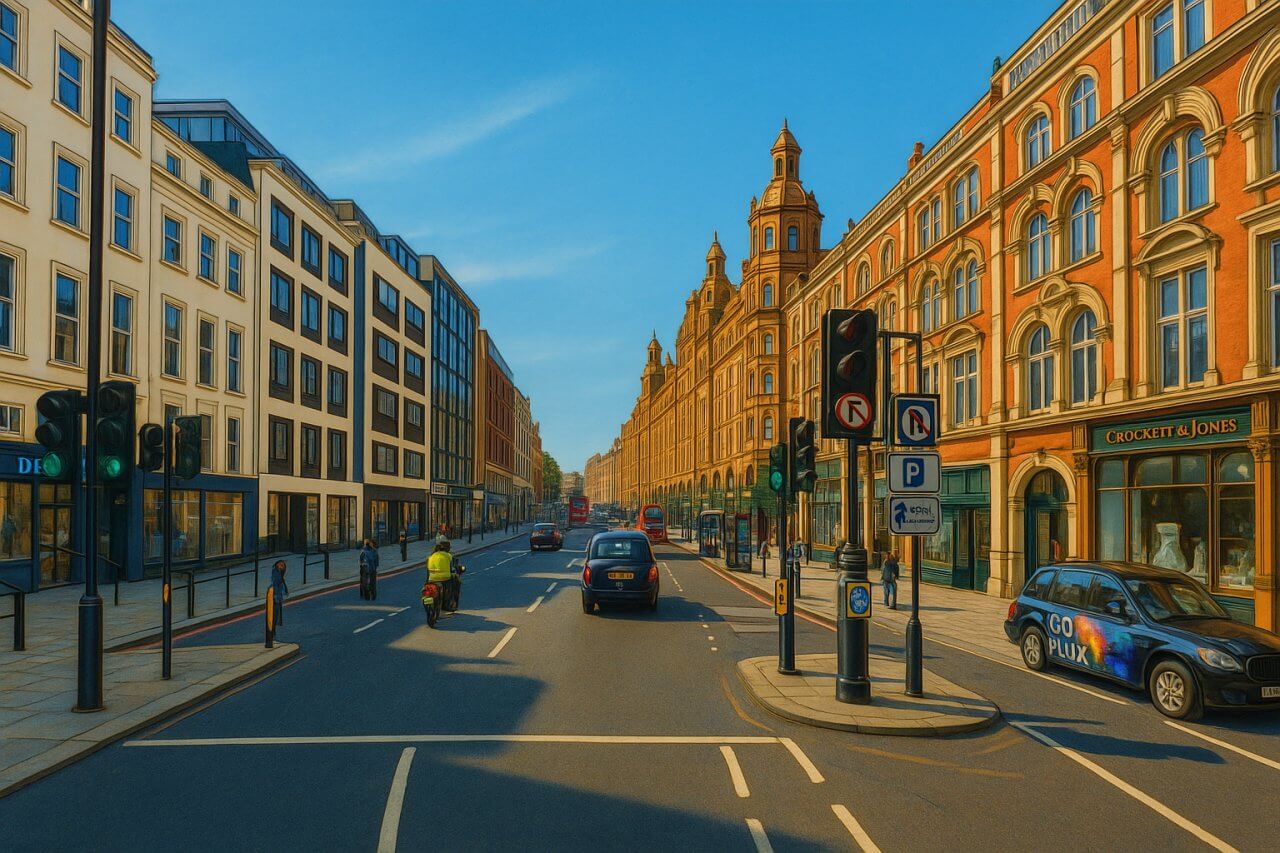
Brompton Road, London
Brompton Road: A Historic and Luxurious Artery in London
Brompton Road is a prominent street in the Royal Borough of Kensington and Chelsea, London. Stretching from the bustling area of Knightsbridge in the northeast to the intersection with Fulham Road in the southwest, it serves as a vital connector between some of London's most affluent neighborhoods.
Geography and Traffic Flow
Brompton Road spans approximately 1.15 kilometers (3772 ft, 0.71 miles), running in a southwest to northeast direction. The road accommodates two-way traffic, with designated lanes for vehicles and cyclists. Due to its central location and proximity to major attractions, it experiences significant vehicular and pedestrian traffic, especially during peak hours.
Historical Background
The origins of Brompton Road date back to the 19th century, evolving from a rural lane into a major urban thoroughfare as London expanded westward. The name "Brompton" is derived from the Old English "broom tun," meaning "settlement where broom grows," referencing the gorse bushes that once populated the area. The pronunciation is /ˈbrɒmptən/, commonly spelled as "Brompton."
Character and Atmosphere
Today, Brompton Road is synonymous with luxury and elegance. Lined with high-end boutiques, gourmet restaurants, and historic buildings, it exudes an air of sophistication. The street seamlessly blends the old with the new, offering a unique experience that reflects London's rich cultural tapestry.
Notable Landmarks and Attractions
- Harrods: Perhaps the most iconic department store in the world, Harrods is a must-visit destination for luxury shopping enthusiasts.
- Victoria and Albert Museum: Located nearby, this museum houses a vast collection of art and design artifacts spanning centuries.
- Brompton Oratory: A stunning example of Baroque architecture, this Roman Catholic church offers both spiritual solace and architectural beauty.
- Hyde Park: Just a short walk away, this expansive green space provides a tranquil escape from the urban hustle.
Real Estate Insights
As of 2025, properties along Brompton Road command premium prices, reflecting the area's desirability. The average property price stands at approximately £1,147,500, with variations depending on property type and size. For instance, a 1,500 sq ft (approximately 139.35 sq meters) apartment may be priced higher due to its spaciousness and location. Compared to the broader London market, Brompton Road's real estate remains among the most sought-after.
Transportation and Accessibility
Underground Stations
- Knightsbridge Station: Served by the Piccadilly Line, providing direct access to central London and Heathrow Airport.
- South Kensington Station: Served by the District, Circle, and Piccadilly Lines, offering extensive connectivity across the city.
Bus Services
Several bus routes operate along or near Brompton Road, including:
- Routes 14, 74, C1, N74, and N97: These routes provide convenient access to various parts of London, including night services for late travelers.
Fun Fact
Brompton Road was once home to the Brompton Road Underground Station, which operated from 1906 until its closure in 1934 due to low passenger numbers. During World War II, the station was repurposed as a command center for anti-aircraft operations. Today, the disused station remains a point of historical intrigue, occasionally featured in "Hidden London" tours.
Quick Facts
- Location: Royal Borough of Kensington and Chelsea, London
- Length: Approximately 1.3 km (0.8 miles)
- Traffic Direction: Two-way
- Historical Significance: Evolved from a rural lane to a major urban street in the 19th century
- Pronunciation: /ˈbrɒmptən/ ("Brompton")
- Key Attractions: Harrods, Victoria and Albert Museum, Brompton Oratory, Hyde Park
- Average Property Price (2025): £1,147,500
- Nearest Underground Stations: Knightsbridge (Piccadilly Line), South Kensington (District, Circle, Piccadilly Lines)
- Bus Routes: 14, 74, C1, N74, N97
- Fun Fact: Former site of Brompton Road Underground Station, now a historical landmark
Map of Brompton Road, London

Painting of Brompton Road, London (View image in full size)